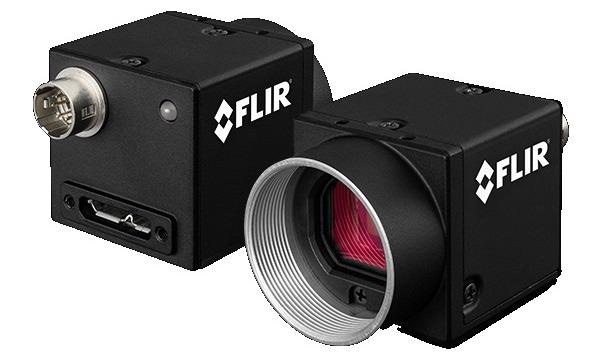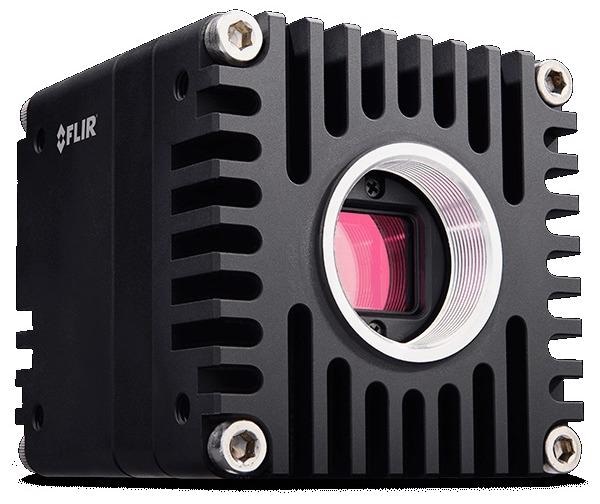
Image Credit: FLIR Systems
Complementary metal-oxide-semiconductor (CMOS) technology now offers state-of-the-art imaging capabilities necessary for a number of biomedical applications, but the question is, can it supplant the more expensive sCMOS (scientific CMOS) sensors?
CMOS and sCMOS sensors are the benchmarks when considering performance and value in machine vision across many industries, and this article will describe the benefits and costs of each technology for exacting imaging applications in biomedical and life sciences.
What's the Difference Between CMOS and sCMOS sensors?
Generally, a sCMOS sensor is believed to be a 'next-generation' CMOS sensor. sCMOS technology was established to bridge the gap between new CMOS sensors and conventional CCD (Charge Coupling Device) sensors during the early development phases of CMOS.
Initially, biomedical applications couldn’t utilize CMOS sensors due to dynamic range, read noise, frame rates and resolutions being compromised. When sCMOS cameras were first brought in, they utilized very similar design principles and fabrication techniques as CMOS sensors but introduced many features that helped overcome initial CMOS shortcomings.
This made sCMOS sensors appropriate for scientific applications where low light performance, high fidelity and wide dynamic range were key factors.
Yet, in subsequent years sCMOS cameras, traditional CMOS sensors have considerably improved in terms of their quantum efficiency and the capacity to reduce their own internal noise, making CMOS cameras a good option for a number of advanced biomedical applications.
In addition, most CMOS cameras are importantly less expensive than sCMOS cameras. This factor alone has prompted many engineers and researchers to consider the latest CMOS sensor when they need to select a cytology/cytogenetics camera, microscopy camera, histology camera, or epifluorescence camera for their application.
Do I Need a CMOS or a sCMOS Sensor?
When choosing between a CMOS or sCMOS sensor depends on a number of factors. If you are deliberating over the two, you are probably using epifluorescence illumination because white light is bright enough to not necessitate a sCMOS sensor.
The capacity of one over the other can sometimes down to how much light reaches the camera or a combination of performance parameters that are specific to an application.
Regardless of CMOS or sCMOS, the appropriate selection would be a monochrome sensor over the color equivalent for the inherent quantum efficiency offered by a monochrome sensor.
An sCMOS sensor is distinguished by backside illumination and large pixels helping limit overall noise (like CCD technology). sCMOS cameras generally include a Peltier cooling system to limit thermally generated noise over extended exposures.
Cameras utilizing sCMOS sensors demand a high bandwidth interface such as CameraLink or CoaXpress with a frame grabber board. This makes such vision systems more intricate, and therefore more expensive.
To mitigate against this, CMOS manufacturers have persistently made considerable improvements in quantum efficiency (the capacity to gather incoming photons), reducing read noise (making sure even low levels of incoming photons do not stray within this noise), and applying backside illumination.
While Peltier cooling is another option with some CMOS sensors, the advances in quantum efficiency and reduced noise have made cooling for certain biomedical imaging applications unnecessary.
Another way to reduce cost is via the interface—for years, CMOS sensors have been combined with consumer interfaces like USB3, GigE, and 10 GigE. These interfaces do not need a frame grabber, which offers a decrease in the system's complexity and expense.
Forthcoming interfaces like 25/100GigE, USB4 and CXPX will help eradicate this problem completely by offering significantly higher bandwidths.
CMOS Sensors are a Lower Cost Alternative
The reduction in cost alone has prompted many engineers and system designers to consider assessing the latest CMOS sensors in place of an sCMOS based system.
In a number of cases, vision system designers are surprised to discover a CMOS camera appropriate for the application for less than USD $1,000, when a standard sCMOS setup with relative performance parameters can cost in excess of USD $10,000.
Whether it's sCMOS or CMOS, numerous camera manufacturers do not adhere to a single standard to compare cameras. As a result, it can be a difficult task when comparing cameras regardless of the type of sensor being used.
In the world of machine vision, EMVA1288 has become the standard widely adopted for the specification and measurement of cameras in Europe, America (AIA - American Automated Imaging Association), and Japan (JIIA - Japan Industrial Imaging Association). Click here to learn more about the EMVA 1288 standard for machine vision.
To sum up, for cases that demand extreme levels of performance, a sCMOS camera might be necessary. Yet, it would be worthwhile to determine the most crucial performance parameters for your particular application and make a fair comparison between CMOS and sCMOS cameras before choosing one over another.
CMOS sensors are persistently being advanced and the price to performance ratios between CMOS and sCMOS is quickly narrowing. If application requirements can be met by a traditional CMOS sensor, it might help keep costs low.
Choosing a FLIR CMOS Machine Vision Camera
If you determine a CMOS camera is appropriate for your application, the two most accepted FLIR camera families for epifluorescence applications include the Backfly S and Oryx.
The Blackfly S camera family provides the most extensive range of sensors and interfaces, both USB3 and GigE. There is also a broad range of sensor options paired with both a cased and board-level form factors.

Image Credit: FLIR Systems

Image Credit: FLIR Systems

This information has been sourced, reviewed and adapted from materials provided by FLIR Systems.
For more information on this source, please visit FLIR Systems.